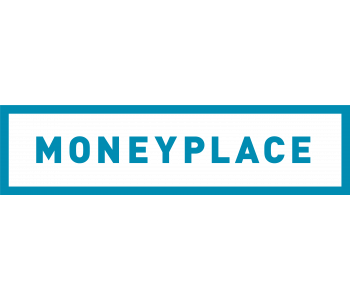
Despite a 16-month wait since the launch of the hatch, the new Corolla sedan has arrived and follows closely in the fine-form footsteps of its five-door sibling.

The 2020 Toyota Corolla sedan has arrived in Australia, ready to slot in alongside the well-regarded Corolla hatch range to complete Toyota’s renewed small car line-up.
Like the five-door, the new sedan adds a hybrid option, which is a first for the booted model. Also, like the hatch, the new sedan adopts Toyota’s newest sharpened styling direction and – unlike the previous two generations that featured a slew of unique panels over shared underpinnings – bears a much stronger family resemblance.
There are other changes, too, to bring the sedan model closer to the hatch. It’s now sourced from Japan rather than Thailand, and shares more of its interior for a more closely aligned look and feel.
Crucially, whereas the hatch has come under fire for its smaller boot and tighter rear seat space, the sedan’s more generous dimensions address some of the shortcomings of the five-door model.
On closer analysis, the new Corolla sedan measures 4630mm from nose to tail – a substantial 255mm longer than the hatch and 10mm up on the outgoing sedan, despite styling which gives it a more compact look.
The new sedan adopts the Toyota New Generation Architecture as used by the hatch, C-HR and Prius, but the wheelbase remains the same as the previous sedan at 2700mm, which is 60mm longer than the hatch.

At the rear, the boot is another key dimension shared with the previous-gen sedan at 470L – a step up of between 137L and 257L more (depending on the variant) over the hatch. Be it hybrid or petrol powered, the boot space is unchanged, and there’s a full-size spare in the petrol Ascent Sport, with all other models running a space-saver spare wheel.
Given how space aft of the B-pillar has been one of the biggest criticisms to befall the 12th-generation hatch, it's good to see the sedan make amends. Certainly, up front the feel is familiar – spacious and comfortable without being gargantuan.
The driver gets a decent range of adjustment, including seat height, but the front passenger misses out and it leaves the left-front seat feeling a little lofty for some. Instruments are a touch more basic on the base model, and paired with a urethane steering wheel.
On the mid-grade SX and flagship ZR there’s ‘premium’ fake leather on the wheel and gear knob, plus a more informative 7.0-inch display in the middle of the gauge cluster.
Jump in the rear and, unsurprisingly, the differences are more pronounced. Leg room is more generous, and while it’s hardly limo-like, there’s enough space to fit behind a tall driver.
Put someone more moderately sized up front and the rear is quite easy to fit into. You do have to duck a little to avoid a head strike, but it’s hardly a contortionist move to have to make.
The new three-model range now offers petrol power across the board, or a hybrid option on the Ascent Sport and SX, with the top-tier ZR missing out.
Engine specs are lifted directly from the Corolla hatch: a 2.0-litre naturally aspirated four-cylinder producing 125kW and 200Nm or a 1.8-litre atmo/electric hybrid rated at 90kW (combined) and 142Nm.
In the Ascent Sport petrol, you can pair the engine with a six-speed manual featuring Toyota’s iMT automated rev-matching function to smooth downshifts. All other variants are auto-only: petrol engines mate to a ‘direct shift’ CVT with a physical first gear for smoother take-offs and less CVT wooliness, while hybrids use a planetary CVT that splits and combines electric and petrol power as required.
The petrol CVT has real smarts, launches cleanly and avoids the slurring, slow reactions of older CVT autos. The hybrid achieves a similar feel, but uses extra electric torque when more punch is required, and does so very effectively.

If you're one of the few remaining manual drivers, you'll like the clean shift feel and light clutch of the manual. It's nicer than your average low-price runabout needs to be, and shows Toyota is still prepared to put the work in, even on a variant with a tiny sales forecast.
The result is a new small sedan that drives a lot like a Corolla. It goes without saying, really. Ultimately, it’s a very good thing; the new Corolla is a much better car than it really needs to be.
Neither engine is race or rally-ready, nor do they need to be. Despite a lower peak torque figure, the hybrid is the surprise package with a little extra shove available at low speeds for a more assertive experience.
Because the electric motor can step in quite often, either as the sole propulsion or assisting the petrol engine, there’s very little untoward noise or intrusive vibration. Unless you’re really pinning the pedal to the firewall, then things understandably become more vocal.
In the petrol models, engine noise is more apparent – not in any outrageously over-the-top way, but when you drive the two back-to-back, you start to notice. There’s a little more thrash and noise from mid-throttle and up (earlier than the hybrid, then), but nothing to spoil the drive.
If you absolutely value ride quality, the 18-inch wheels of the ZR probably aren’t the best fit. Again, there’s nothing unpalatable about the ride, but it shows more of the rough edges of the road surface. Lesser variants run 16-inch alloys on petrol models, or 15-inchers on hybrids, making the road manners much more comfy in the process.

Urban driving at launch was limited (well, non-existent, really), but open-road touring tends to be relaxed and comfy, bar a bit of road noise on some surfaces, and much more prominent in the ZR. Even over some twisty roads, the Corolla sedan offers handling of a higher grade than might be expected. Certainly, it's above the ranks of what you might expect for a car designed to appeal to fleet operators and Uber drivers.
While stop-start drudgery wasn’t a part of the program, a mix of open road and some heated pedalling through the fun stuff delivered decent fuel consumption results. Toyota suggests the petrol auto is capable of 6.0 litres per 100km, while we saw 8.0L/100km. The hybrid offers an official 3.5L/100km (better even than the 4.2L/100km hatch), but in the real world ended up at 4.0L/100km.
If you’re watching your pocketbook, you’ll notice the hatch and sedan match on claimed consumption, but the hybrid sedan manages its lower figures in part due to aero refinements and the adoption of smaller, narrower, eco-focussed tyres.
Over your ownership term, services at 12-month/15,000km intervals will cost $175 per visit. Warranty coverage spans five years with no kilometre limit for private buyers.
In terms of equipment, none are missing anything, but of course the range of features and trinkets grows as you step up through the range.
Crucially, all variants come with safety kit including autonomous emergency braking with pedestrian detection (day and night) and cyclist detection (day), seven airbags, lane-departure alert with steering assist, road sign recognition, active cornering assist, two ISOFIX and three top-tether child seat mounts, and a reverse camera.
Automatics feature lane-trace control for more accurate lane centring and all-speed cruise control. The manual Ascent Sport has ‘high-speed’ adaptive cruise (from 30km/h and up) and misses out on trace control. The SX and ZR also pick up blind-spot monitoring.
Otherwise, opting for the base model nets equipment like an 8.0-inch touchscreen with Apple CarPlay and Android Auto compatibility plus myToyota app functionality (the native system is still a little clunky to use), 4.2-inch instrument cluster display, cloth trim, power windows, remote central locking, dusk-sensing Bi-LED headlights, 60:40 split-fold rear seats with a folding centre armrest, manual air-con and 16-inch alloy wheels.

Hybrid versions add in keyless entry and start plus single-zone climate control, but sub out the 16-inch alloys for 15-inch wheels with aero covers. The Ascent Sport can also be optioned with sat-nav and digital radio.
Pricing starts from $23,335 for the manual, $24,835 for the petrol CVT, and $26,335 for the hybrid (before on-road costs).
The move to the SX brings more gloss-black trim inside, sat-nav and DAB+ radio, a larger driver info display, keyless entry and start, wireless phone charger, paddle shifters on the ‘premium’ steering wheel (petrol only), single-zone climate control, front fog lamps, and an additional USB charge point, from $28,235 in petrol or $29,735 in hybrid guise.
Finally, the ZR throws in combination cloth and faux-leather sports seats with heating and lumbar support, plus electric adjustment for the driver. There are bigger alloy wheels, a colour head-up display, different LED running light signature, chrome window trim, nine-speaker premium JBL audio, and a power moonroof for $33,635.
Despite pricing being slightly higher than before, the lift in standard equipment goes a fair way to cover the difference. The added safety tech is comprehensive, and even the base grade isn’t missing anything essential.
No, it isn’t cheap in the traditional sense any more (long gone are the days of sub-$20K starting prices), but the value still stands.

There are no real surprises here. If you’ve already glanced at our past Corolla reviews, or spent any time with the hatch, you’ll know the new Corolla is both enjoyable to drive, solidly engineered, yet inoffensive in a way that won’t upset past owners.
The Corolla sedan continues that legacy, effectively and convincingly, while at the same time addressing packaging issues found in hatch models. For families, first-car buyers, fleets or empty-nesters, there’s now a Corolla to suit just about all tastes – not just because it’s a Corolla, but because it’s a good Corolla.

This article has been republished with approval from its original source and author at caradvice.com.au.
Let us help you upgrade and get driving sooner
Ready to trade in your current sedan and upgrade to something new? Either way, Stratton Finance can help.
We’ve made the entire financing process as simple and straightforward as possible, updating you every step of the way. Our easy-to-use car finance tool will show you how much you could be paying each month (in less than 60 seconds) to drive around your dream vehicle, and if you’re happy with what you see it’s just a matter of applying online - which takes just 5 minutes!
Call 1300 787 288 today to chat with us and learn more about what we can do for you.























Previous
Australia's best-selling utes comparison: 2020 Toyota HiLux v Ford Ranger
Next
Corolla Ascent Sport v Corolla SX Hybrid v Corolla ZR Hybrid